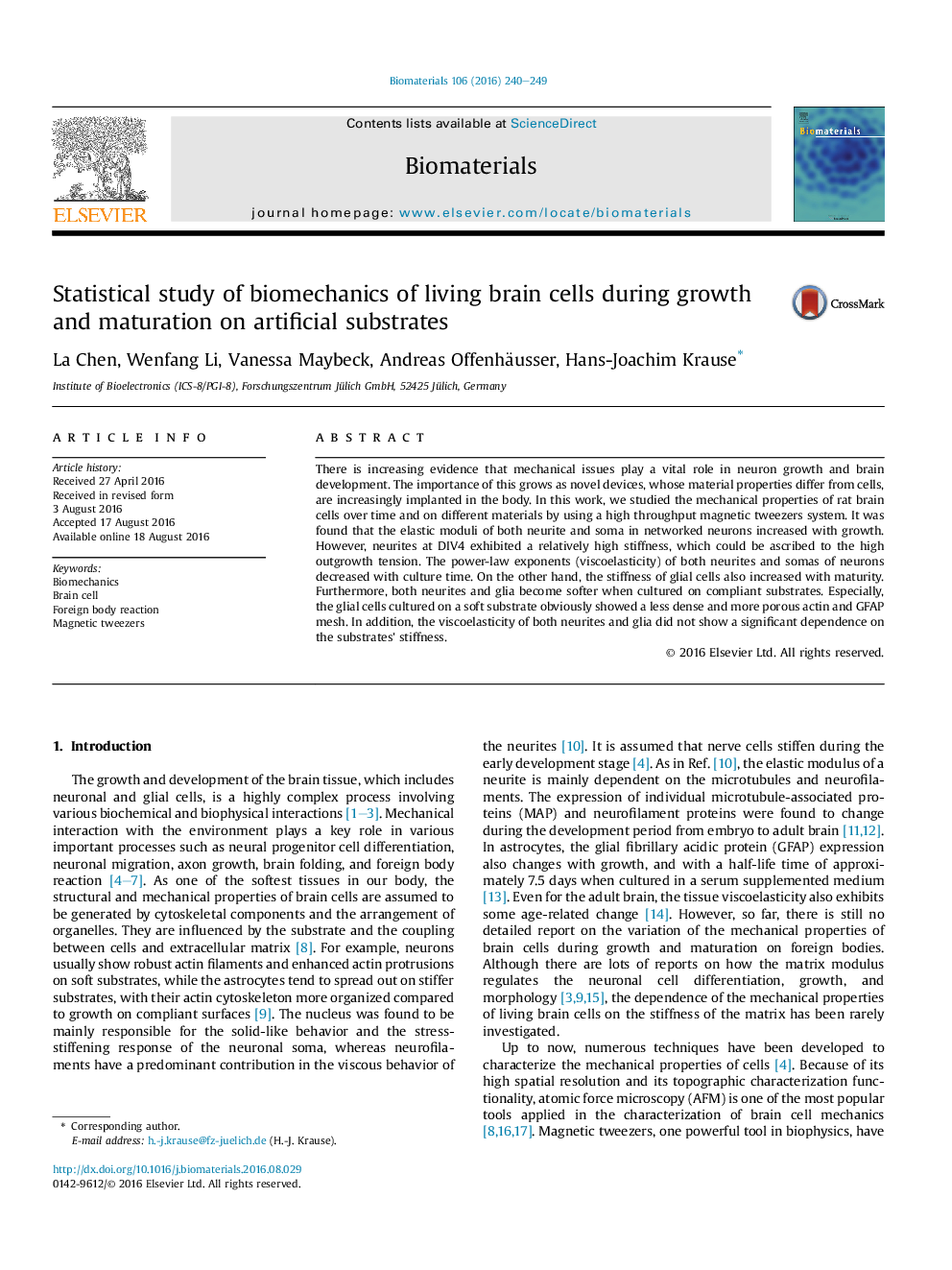| Article ID | Journal | Published Year | Pages | File Type |
|---|---|---|---|---|
| 6451064 | Biomaterials | 2016 | 10 Pages |
There is increasing evidence that mechanical issues play a vital role in neuron growth and brain development. The importance of this grows as novel devices, whose material properties differ from cells, are increasingly implanted in the body. In this work, we studied the mechanical properties of rat brain cells over time and on different materials by using a high throughput magnetic tweezers system. It was found that the elastic moduli of both neurite and soma in networked neurons increased with growth. However, neurites at DIV4 exhibited a relatively high stiffness, which could be ascribed to the high outgrowth tension. The power-law exponents (viscoelasticity) of both neurites and somas of neurons decreased with culture time. On the other hand, the stiffness of glial cells also increased with maturity. Furthermore, both neurites and glia become softer when cultured on compliant substrates. Especially, the glial cells cultured on a soft substrate obviously showed a less dense and more porous actin and GFAP mesh. In addition, the viscoelasticity of both neurites and glia did not show a significant dependence on the substrates' stiffness.
